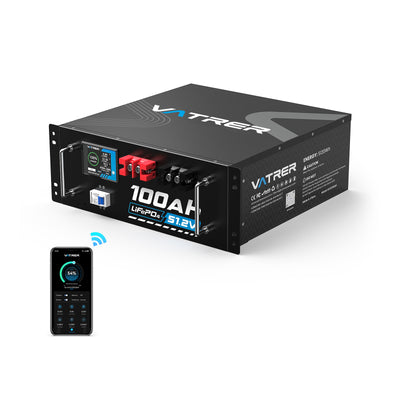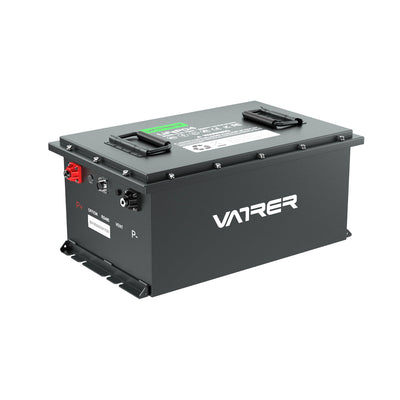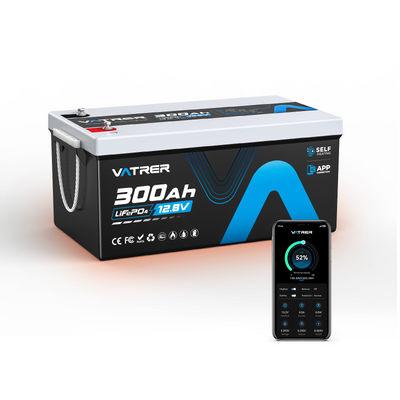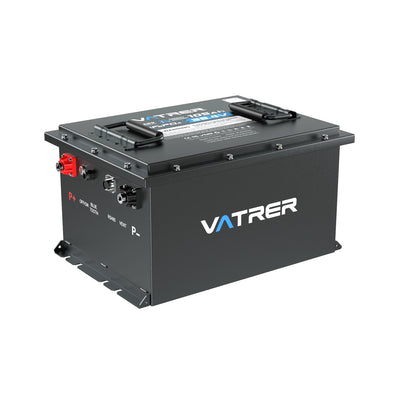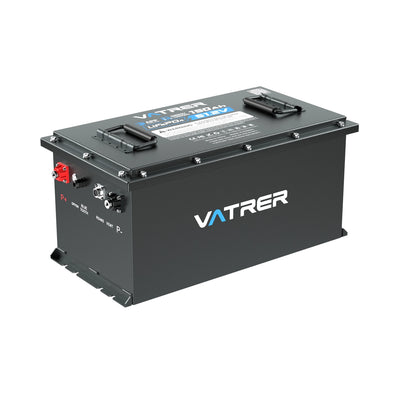
How Long Do Golf Cart Batteries Last On One Charge
Picture yourself rolling up to the 17th hole on a sunny afternoon and suddenly feeling your golf cart lose steam. Whether you’re a regular on the course, managing a resort fleet, or cruising around a retirement community, how far your cart goes on a single charge can really shape your day.
Knowing how long golf cart batteries last per charge isn’t only about convenience. It’s tied to dependability, operating costs, and making smart long-term decisions. In this guide, we’ll break down real-world range, what affects it, and practical tips to help you get more distance from every charge.

Average Distance Per Charge: Comparing Golf Cart Battery Types
The total distance (or number of holes) you can cover on a full charge depends largely on the kind of battery you’re using. Here’s a side-by-side look at the two most common options:
| Battery Type | Range on One Charge | Run Time Estimate | Maintenance Needs | Average Lifespan |
|---|---|---|---|---|
| Lead-Acid Batteries | 15–25 miles | 2–3 hours | High (check water levels, clean terminals) | 4–6 years |
| Lithium Golf Cart Batteries | 30–40+ miles | 4–5+ hours | Low (maintenance-free) | 8–10+ years (or more) |
Tip: A lithium pack like the Vatrer 48V 105Ah can deliver up to roughly 50 miles of range, which works well for longer outings or several rounds in a day.
Key Factors That Golf Cart Batteries Have on How Far You Can Go
Even with the best golf cart battery, your driving range on one charge isn’t fixed. These main factors – including conditions and habits – can shift your results quite a bit:
Terrain
- Flat courses or paths use less energy, so you can expect more distance per charge.
- Hills, rough paths, and frequent stopping and starting pull more power from the pack.
Load and Accessories
- Extra passengers, golf bags, or cargo increase the load and power draw.
- Accessories such as lights, fans, coolers, or sound systems shorten run time when used often.
Driving Style
- Hard acceleration and running at top speed use up your charge faster.
- Smooth takeoffs and steady speeds help stretch each charge further.
Temperature
- Extreme heat or cold can reduce both battery performance and effective range.
- Batteries generally perform best in moderate, stable temperatures during use and charging.
Understanding Golf Cart Battery Types and How to Choose the Right One
Here’s a closer look at the main golf cart battery types so you can match your choice to how you actually use your cart:
- Flooded Lead-Acid (FLA): Budget-friendly but requires regular care. You need to monitor and top up distilled water levels on a routine basis.
- Absorbed Glass Mat (AGM): Sealed lead-acid design with reduced maintenance, but still heavier and typically shorter-lived than lithium options.
- Lithium-Ion (LiFePO4): Lightweight with a longer service life, minimal upkeep, and quicker charging, as seen with a Vatrer golf cart lithium battery.
Note: Lithium batteries usually cost more at the beginning, but their extended lifespan and consistent output often provide better value over the long term.
Common Signs Your Golf Cart Battery Is Losing Capacity
If your cart is needing a charge sooner than it used to, your battery may be nearing end of life. Watch for:
- Fewer miles per full charge than you previously enjoyed.
- Charging sessions taking noticeably longer.
- Reduced top speed or slower acceleration.
- More frequent watering for lead-acid batteries.
- Casing that looks swollen, misshapen, or warped.
Tip: These symptoms usually mean your golf cart battery should be tested and likely replaced.
Golf Cart Battery Maintenance Tips to Get More Range from Each Charge
Whether you’re running traditional lead-acid packs or modern lithium golf cart batteries, good maintenance practices help maximize output on every charge:
For All Battery Types
- Avoid running the pack down to empty; try charging once you reach roughly 20–30% state of charge.
- Use a charger that’s designed for your specific battery chemistry and voltage.
- Store your cart and batteries in a cool, dry place, since heat speeds up wear and aging.
For Lead-Acid
- Check electrolyte levels after charging and top up with distilled water only when needed.
- Clean terminals and connections regularly to reduce resistance and power loss.
- Prevent overcharging by using a quality automatic or smart charger whenever possible.
For Lithium Battery
- Choose packs with an integrated BMS (like Vatrer’s smart lithium batteries) to guard against overcharging, short circuits, or overheating.
- Avoid fully draining the pack; starting a charge around 20% remaining can support a longer overall lifespan.
How Long Should a Golf Cart Battery Last per Charge to Be “Good Enough”?
Here’s how different use cases line up with battery options and typical range needs:
| Use Case | Ideal Battery Type | Range Needed | Notes |
|---|---|---|---|
| Weekend golfer (18–36 holes) | Lithium or Lead-Acid | 10–25 miles | Lead-acid can work, but lithium offers a smoother experience |
| Retirement community rider (daily use) | Lithium | 30–40+ miles | Provides stronger long-term reliability |
| Golf course/resort fleet | Lithium (low maintenance) | High mileage and uptime | Less downtime, extended service life |
| Hilly or off-road terrain users | High-capacity lithium | ≥40 miles | Lighter packs improve climbing and efficiency |
When to Replace Your Golf Cart Battery and Avoid Range Anxiety
Even with careful use and maintenance, every battery will wear out. Plan for replacement around these benchmarks:
- Lead-acid batteries: Typically about 4–6 years or roughly 500–800 full charge cycles.
- Lithium batteries: Around 8–10 years or roughly 3000–5000 cycles, especially with a quality Vatrer LiFePO4 battery.
Pro Tip: Replace packs as a matched set. Mixing new and old batteries or different types in one system can cut performance and may cause damage to the entire pack.
Get More from Every Charge with Vatrer Lithium Batteries
If you’re aiming for dependable range and modern battery tech, Vatrer Battery provides advanced lithium golf cart batteries such as the 48V 105Ah LiFePO4 battery with an integrated 200A BMS and fast 58.4V 20A charging support.
- Provides up to about 50 miles of driving on a full charge.
- Built-in smart protections to support safety and efficiency.
- Rated for 4000+ life cycles in typical use.
- Maintenance-free and roughly 50% lighter than many conventional batteries.
Whether you’re refreshing an older cart or choosing components for a new build, Vatrer batteries can help you travel farther with confidence.
Smarter Batteries, Smoother Rides
So, how long do golf cart batteries last on a single charge? The real answer depends on battery chemistry, how you drive, and how well you look after your system.
Selecting the right battery – especially a high-quality lithium pack – and following good maintenance practices can mean more distance, fewer unexpected stops, and a more enjoyable ride. When it’s time to upgrade, choosing a trusted brand like Vatrer Battery helps ensure you’re investing in technology that delivers over the long term.
Ready to extend your range? Take a look at Vatrer lithium solutions built for today’s golf cart owners. Reliable. Efficient. Smart.
FAQs
How Do I Choose the Right Battery Size for My Golf Cart?
Start by looking at how you actually use the cart each day: estimate your usual distance or hours of operation, including hills, passengers, and accessories.
Translate that into an energy requirement using an estimated average power draw (W) or current (A) for your cart. Add a safety margin of roughly 20–40% and pick a usable Depth of Discharge (DoD) that fits your chemistry—for example, LiFePO4 packs are often designed for higher usable DoD.
From there, select a battery pack whose rated voltage and capacity comfortably cover that usable energy plus normal efficiency losses. For fleets, size the system based on the busiest days rather than typical days so you don’t end up with mid-shift downtime.
What Is a Good Charging Routine for Golf Cart Fleets?
An effective fleet strategy staggers charging so carts aren’t all off-duty at once. Set up scheduled charging windows (after shifts, plus short midday top-ups), use smart chargers to avoid unnecessary full cycles, and keep a few units in reserve for peak demand.
Monitor battery state-of-health centrally (through BMS data if available) so you can plan replacements and rotate packs to spread wear. Dedicated charging bays equal to about 20–30% of your fleet size help handle rush periods, and clear written procedures keep staff charging habits consistent.
How Should I Store Golf Cart Batteries During the Off-Season?
For extended storage, set lithium batteries to roughly 40–60% state of charge and keep lead-acid batteries fully charged, then disconnect them or use an appropriate maintenance/float charger.
Store packs in a cool, dry location—ideally around 10–25°C (50–77°F)—to reduce self-discharge and slow aging. Avoid freezing temperatures and very hot spaces like attics.
Check charge levels every 6–8 weeks and recharge when needed to prevent deep discharge. Label each battery with storage date and approximate SOC so bringing them back into service is more organized.
Can I Convert an Older Lead-Acid Golf Cart to Lithium?
Yes, many older carts can be upgraded to lithium, but the process usually involves more than just swapping batteries.
You’ll need to match the system voltage, confirm the existing controller can work with a lithium voltage curve, install a compatible charger and BMS, and properly secure the lighter lithium modules in the battery bay.
Also review grounding, fusing, and connector condition. It’s a good idea to have a qualified technician check motor and controller limits and handle any software or speed limiter updates to avoid nuisance shutoffs or issues with coverage and warranties.
What Safety Precautions Should I Follow When Moving and Installing Batteries?
Always cover and insulate terminals, secure batteries so they can’t shift during transport, and lift them using non-conductive straps or proper handles.
Wear gloves and eye protection while working, keep a suitable dry chemical fire extinguisher on hand when moving multiple lithium packs, and never stack loose, unsecured batteries.
For lithium systems, follow the manufacturer’s prep instructions (such as terminal caps and packaging) and confirm with your carrier whether any dangerous goods rules apply. When in doubt, have the supplier or a certified installer manage delivery and installation.
How Do I Diagnose a Golf Cart Battery That Charges but Drains Too Quickly?
Begin with the basics: verify the charger is delivering the correct voltage and current, ensure all terminals are tight and free from corrosion, and check for accessories that might be drawing power when the cart is off.
Next, measure open-circuit voltage and then the voltage drop under load. A sharp drop under a modest load often indicates increased internal resistance or failing cells. If your pack has a BMS with logs, review charge acceptance history and any fault codes.
If your tests point to internal wear or damage, it’s usually more cost-effective and reliable to plan for replacement rather than trying repeated short-term fixes.
Share


































